The July Challenge in the Historical Sew Monthly 2018 is Sleeves, and I’m extremely excited to see what people do with it. It’s such an easy challenge to interpret and fulfil, and there are so many possibilities.
Because it’s such an easy challenge to find a project for (just make anything with sleeves that are in some way interesting and significant!) I’m just going to show you some of my favourite (or, in the case of late 16th century examples, least favourite) sleeves from throughout history.
And I mean it when I say throughout history, because the oldest known extant garment, this 5,000 year old tunic/shirt, has fascinating sleeves which have been purposefully pleated or ruched to give them shape and interest:
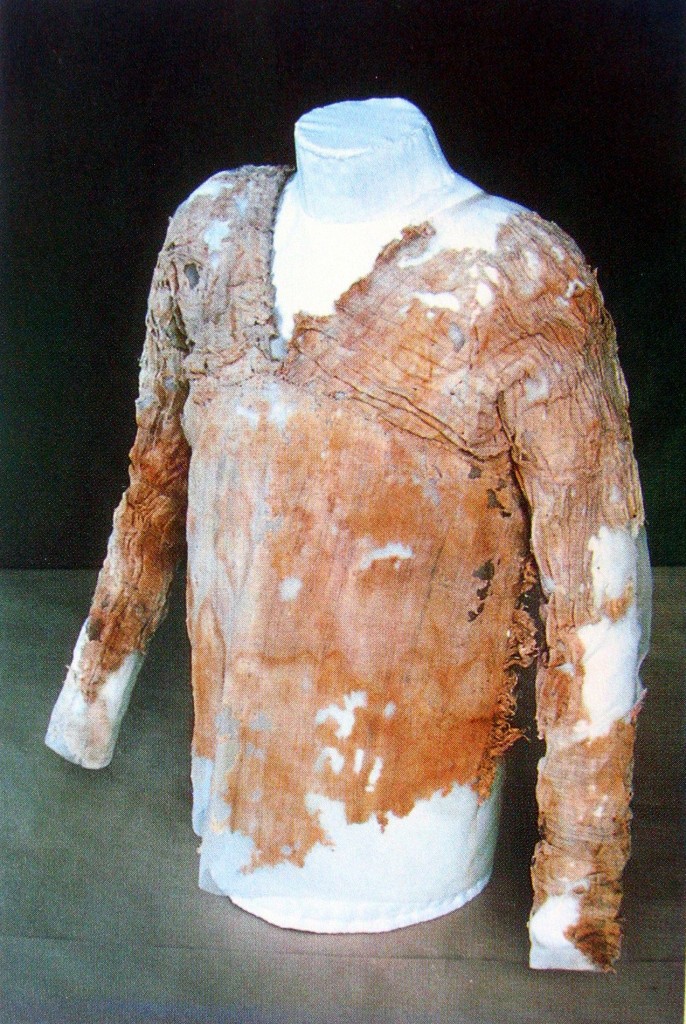
Pleated tunic, Ancient Egyptian. 1st dynasty, c. 3100-2890 BC. Werner Forman Archive/ University College London, Petrie Museum
Only 3,400 years later, this Coptic tunic from the same area of the world features quite simple sleeves, but beautifully decorated:
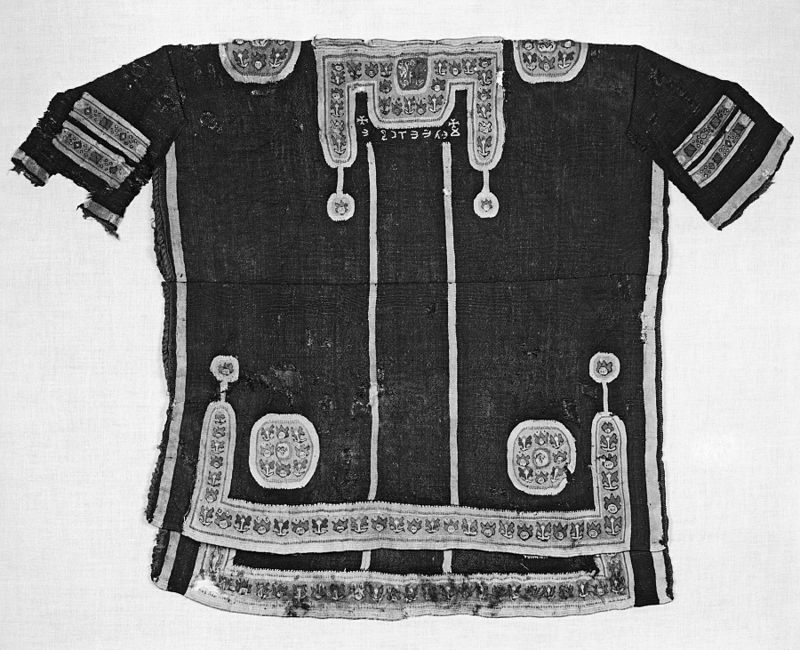
Coptic-Byzantine wool tunic, 6th century AD, Walters Art Museum
I love Medieval fitted sleeves, especially ones with lots of buttons. If you’re trying to fit your own pair of 14th century sleeves, you may find my post showing how I fitted and patterned mine quite helpful.
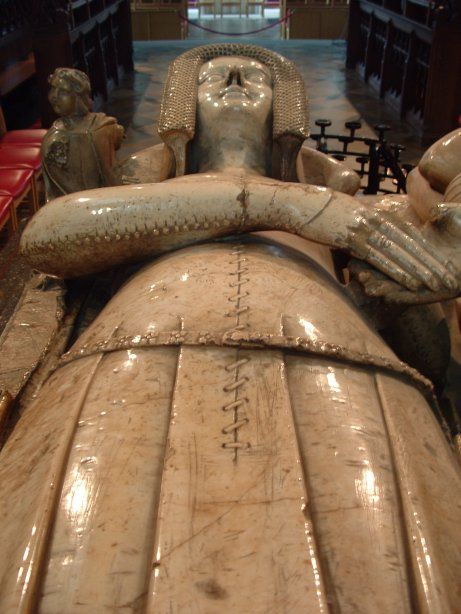
Effigy of Katherine, Countess of Warwick, died 1369
The late Middle Ages are full of fantastic sleeves, with five different kinds of amazing sleeve-ness shown below, from enormous dagged houpeland sleeves, to very fitted short sleeves with falling tippets.

Houppelandes with voluminous sleeves, 1412-16, Detail from Très Riches Heures du Duc de Berry
For early 16th century examples, I couldn’t go past an example of Northern German sleeves with their horizontal stripes, interesting slashing, and elongated cuffs.

Portrait of Catherine of Mecklenburg by Lucas Cranach the Elder, 1514
I adore the more restrained slashing and elaborate oversleeves with their tie embellishments on Élisabeth de Valois’ dress.
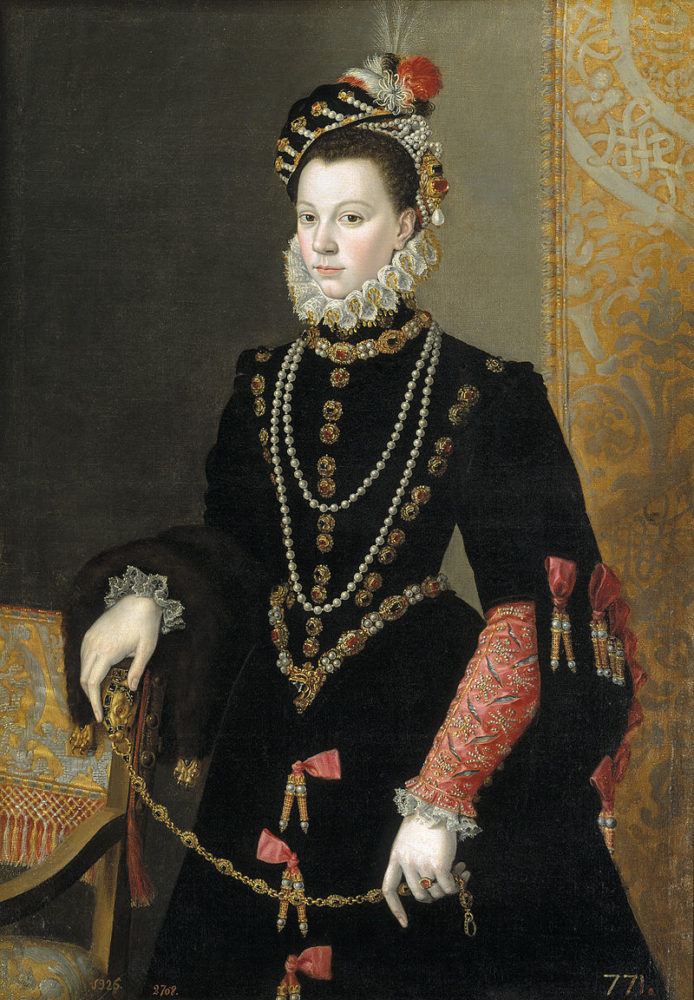
Élisabeth de Valois, by Juan Pantoja de la Cruz, 1565
While they aren’t as extravagant as the more aristocratic high-fashion examples of the era, I really love the different kinds of sleeves shown on peasants in Brueghel the Elder’s paintings:

Pieter Brueghel the Elder, the Dance, 1568
Halfway between the two, showing sleeves that are fashionable and practical, is Moroni’s tailor:

The Tailor, Giovanni Battista Moroni, ca 1570
And then, from those perfectly nice, elegant, totally practical sleeves, fashion moved into what I would argue were the ugliest sleeves ever devised: 1580s & 90s maggot grubblet sleeves:

Ball at the Court of Henry III of France, unknown artist, ca 1580, the Louvre (detail)
Everything about that guy in the centre who coyly turns to face us gives me the heebie jeebies. I’m absolutely convinced that one day I’m going to glance at the painting and his limbs are going to wriggle off him and start crawling across the page.
These ones are less creepy, but have the distinction of managing to combine individual elements that are all phenomenally beautiful in their own right (that embroidery on the bodice and sleeves!) into an unabashedly unattractive whole.
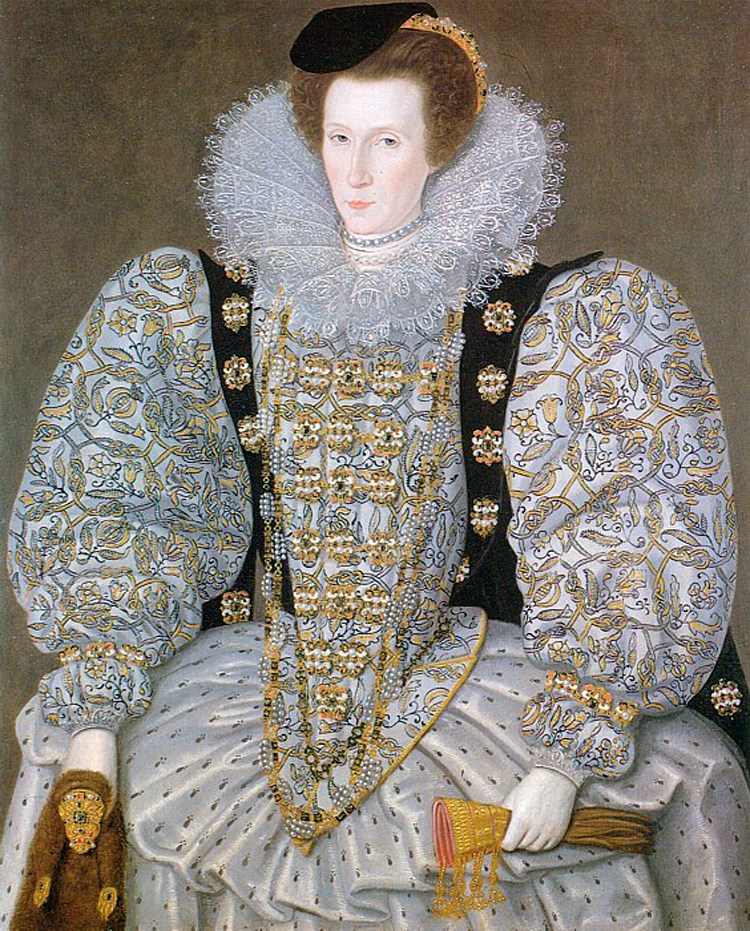
Portrait of a Lady, attributed to William Segar, c. 1595
17th century sleeves are a huge improvement in my opinion, from the slim examples of the 1610s:

Marcus Gheeraerts the younger (Flemish artist, 1561-1635) Frances Howard, Countess of Hertford, 1611
To the soft, romantic puffed sleeves of the 1630s:

Queen Henrietta Maria, 1632, Anthony van Dyke
And the fanciful sleeves of the 1660s, like these ones, that look back to early 16th century slashing:

Caspar Netscher (circa 1639—1684), Lady at the Window, 1666, Von der Heydt-Museum
The 18th century did equally beautiful sleeves, like the ruffle trimmed lace sleeves seen on robe de cour, like the ones seen on the governess, and the wide sleeves of men’s justacorps:
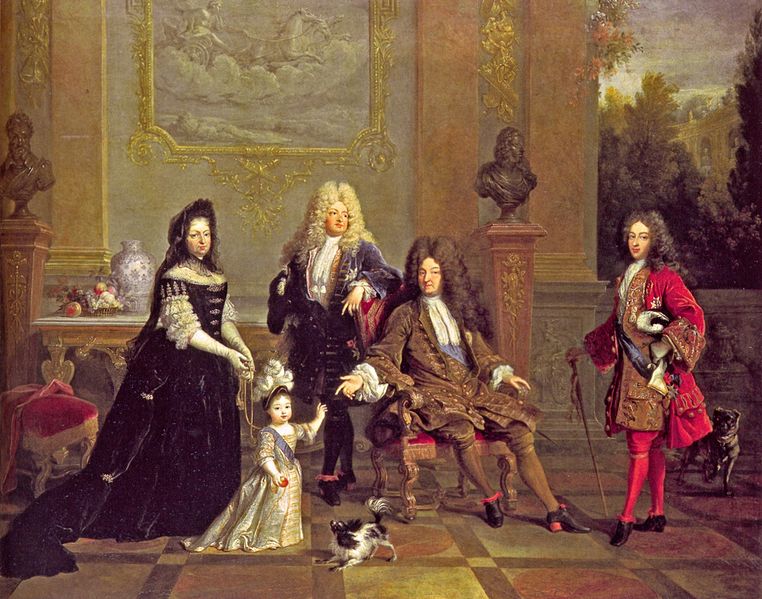
Louis XIV and heirs with the royal governess, Formerly attributed to Nicolas de Largillière, now unknown, circa 1710
Or the ones on this Robe Volante, with pleating that equals the back pleats of the loose gown:

Robe Volante, 1720-1735, Musee Galliera de la Mode de la Ville de Paris
And the classic ruffle-trimmed 3/4 length sleeves that we know from so many mid-century Française and Anglaise, and early mid-century Mantua, like this one:
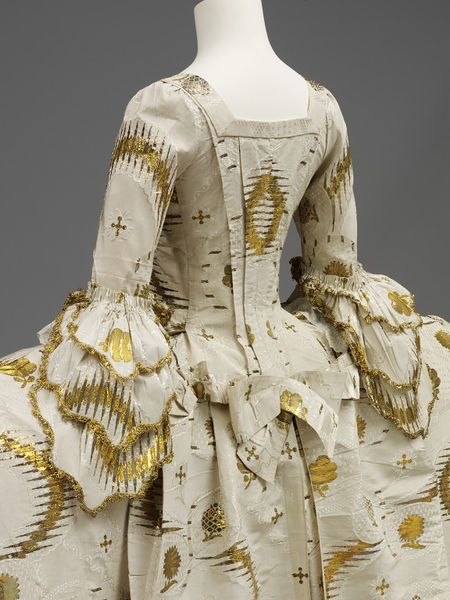
Mantua, English from French fabric, 1755-1760 from fabric woven between 1753-1755, Silk, silver-gilt thread, linen thread, silk thread, hand-sewn, V&A
The way the 18th century used stripe placement is so fascinating, and it’s particularly obvious on sleeves:

Portrait of a Young Woman Holding Two Roses. AgustÃn Esteve y Marques, ca. 1790
Early 19th century sleeves carried on construction and design traditions from the 18th century, but added in new inspiration and shapes, including sleeves which referenced classical drapery:

Elisabeth Alexandrovna Stroganoff countess Demidoff (1779-1818) by Robert Lefèvre, ca. 1805 Hermitage Museum St Petersburg
They also looked to the past, and to a variety of ‘exotic’ cultures for inspiration, as seen in these mameluke sleeves, which reference fashions seen in the Ottoman Empire (or at least claim to).

Robe de Cachemir with Mameluke sleeves, 1810
1820s sleeves are pretty much the last time men got to have fun with their sleeve fashions, with puffed sleeves that created an exaggerated, curvaceous silhouette.
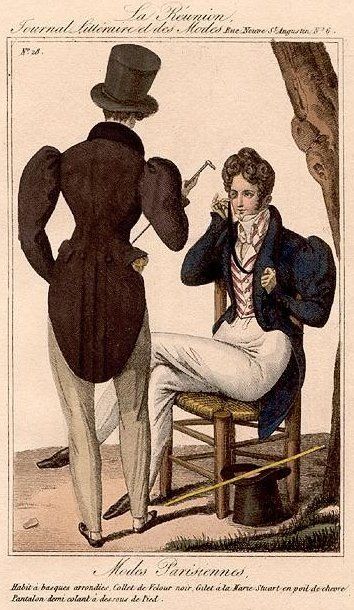
Late Regency fashion plate, 1827
And women’s sleeves of the 1820s & 30s are famously inventive and whimsical (or, simply mad, depending on your perspective):
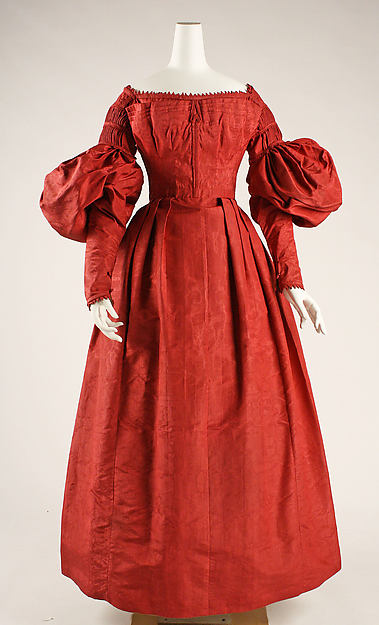
Dinner or reception dress, ca. 1837, American, silk, Metropolitan Museum of Art, 37.192
A whole variety of sleeve styles were fashionable in the 1860s, but I quite like the revival of the mameluke, particularly as a sheer blouse:
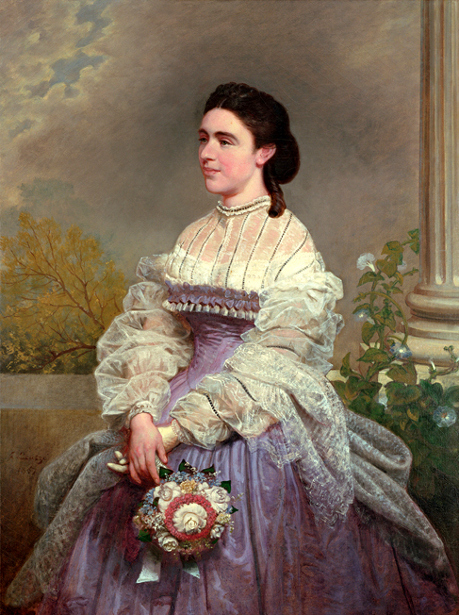
Frances Adeline ‘Fanny’ Seward by Emanuel Gottlieb Leutze
You can see almost every previous historical period referenced in late Victorian sleeves, like this pair, which use elements of both Renaissance and 18th century sleeve designs:

Reception dress, possibly American, about 1880, Silk velvet trimmed with silk satin and cotton machine lace, MFA Boston, 2007.501
And I couldn’t possible do this post without an example of extremely puffed 1890s sleeves. I think these might have been a bit much even for Anne:
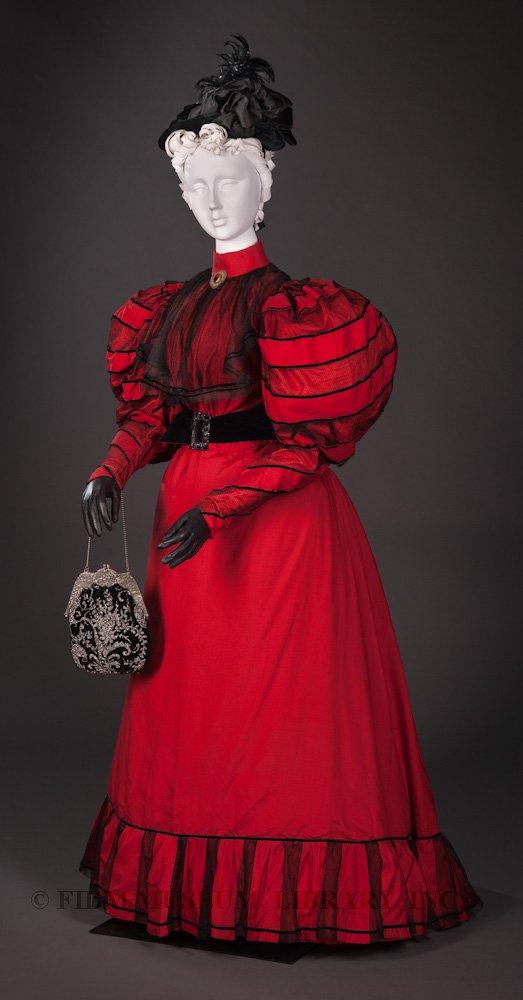
Woman’s ensemble, 1894-96, Silk, Gift of the Manlove Family, FIDM, S2006.870.22AB
The early 20th century saw a whole range of sleeve innovations which are still being seen in modern fashion, including variations on cut-on sleeves, including kimono sleeves, and Magyar sleeves, like the ones shown here:
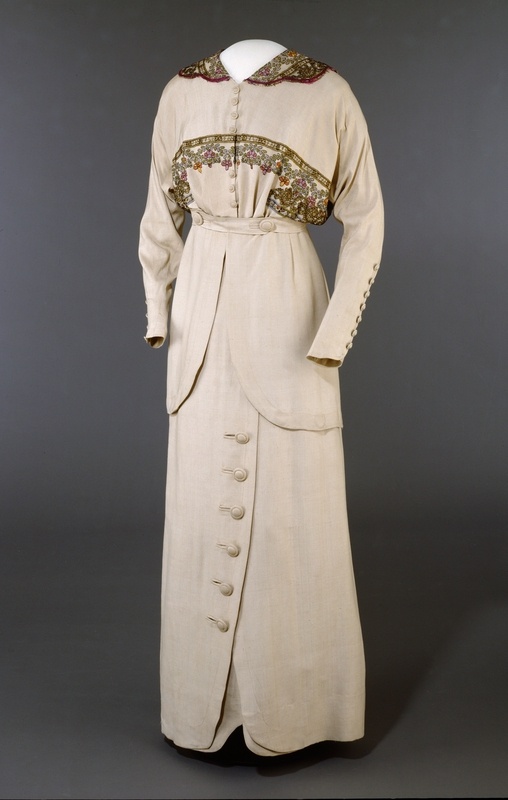
Suit, Josefine Hammarbæck (Oslo, Norway)- 1913, silk and cotton, Digitalt Museum
So, happy sleeve sewing!


Ack! I’m still finishing my June HSM–an 1850s Bloomer outfit (how much more fashion rebel can you get) for a 1/3 scale well-articulated doll. All my HSMs (of which June’s is my first) will be for this doll, since my blog is centered around sewing doll clothes.
Er….Rosie;
As one of the Admins for the challenge, I have bad news. Doll clothing–with very few exceptions–is expressly against the challenge, which is centered around sewing full scale clothing (including for children).
What a fun stroll through history!
I agree! I love posts like these the best, where our Dreamstress takes us through a whole chronology (like this one looking at sleeves), or the breadth of styles (like the one looking at jumps vs stays).
Quick typo: Early 20th century, at the bottom, I think you meant.
I notice it only took 15 years to go from the super giant sleeves to the super thin ones in 1695/1710, maybe they got sick of them too.
Thank you for showcasing all these fantastic sleeves. They’re very inspiring, and I now realize the project I was going to submit for Rebellion & Counter Culture but which isn’t likely to be finished in time will also work for Sleeves.
I’m with you regarding 1580s sleeves. They do look like maggot grubs, especially when made in pale coloured satin.
Lots of fun sleeves! I love the orange-y/yellow 1890s dress at the top! Mmm… So much sleeve on a simple dress! 🙂
Best,
Quinn